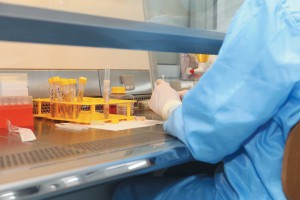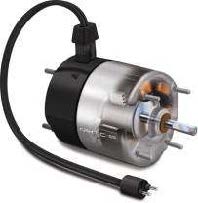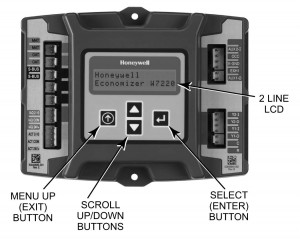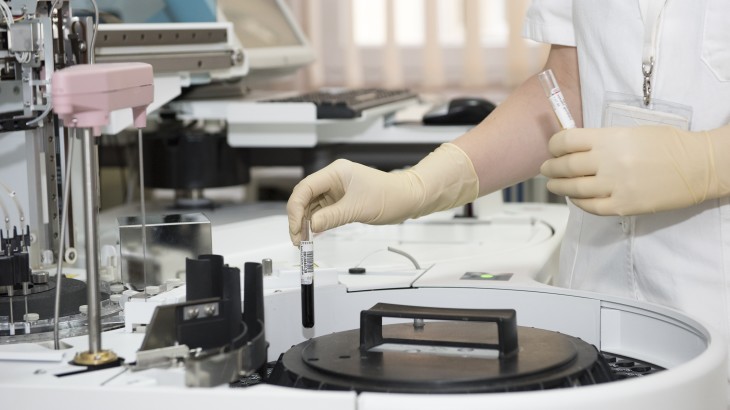Pharmaceutical companies are one of the most challenging and complex industries. It is no surprise pharmaceutical facilities require special energy considerations. Let’s examine pharmaceutical energy efficiency, including facts about pharmaceutical costs and some energy solutions.
- Pharmaceutical companies in the U.S. spend nearly $1 billion each year on energy to power their manufacturing facilities.
- It costs about $5 billion to develop each new medication.
Pharmaceutical energy efficiency retrofits and continued maintenance are essential to highly efficient building systems. Efficiency reduces operating and maintenance costs and can help improve productivity. Common efficiency measures include lighting upgrades, fume hood controls, automatic sash doors, compressed air measures, boiler reset controls, refrigeration and freezer motors and controls, HVAC controls and economizers, and more.
Fume Hoods

Although vital to the health and safety of workers, fume hoods are energy-intensive and can consume 3-5 times as much energy as a single-family home. The largest waste of energy comes from open sashes. Most pharmaceutical companies have strict processes and procedures and train employees on routine energy and safety measures. However, there is always room for human error, and installing automatic sash controls simplifies and automates the process, ensuring sash doors never remain open when not in use. When sash doors are closed, a variable air volume (VAV) fume hood is 60% more energy efficient. Just by keeping sash doors closed can save up to $1,000 per year, per fume hood. This does not include other energy efficiency measures.
Fume Hoods by the Numbers
- Average cost to operate one fume hood: $9,100+/year.
- Average cost to operate hood after energy efficient retrofit: $5,600/year.
Additional Energy Efficiency Measures for Fume Hoods
Variable Temperature Setback
- Variable Air Volume (VAV) is a type of HVAC system that supplies a variable airflow at a constant temperature. A variable temperature setback automatically changes the constant temperature based on occupancy levels. VAV systems can be coupled with variable speed drives (VSDs) on the fans to further enhance energy savings.
- For larger systems, digital controls can be installed into the VAV terminal unit to collect accurate data on energy consumption, ideal for energy management control.
VAV Fume Hoods
- VAV fume hoods, combined with automatic sash controls, allows the hood to continuously interface with the facility’s HVAC system. As the hood sash is raised or lowered, the HVAC system is signaled that the volume of air to be exhausted must be increased or decreased, and then it adjusts the fan speeds accordingly.
Motors and Controls

Motors and controls for HVAC systems and refrigeration are one of the most important measures pharmaceutical facility managers must manage. Energy efficient motors, combined with controls and variable frequency drives (VSDs), help reduce fan speed to run only when necessary, instead of running non-stop. Refrigeration systems, for example, should only run when the thermostat calls for the next cooling cycle. A refrigeration fan that runs constantly is wasting a lot of energy. Controls monitor the inlet and outlet temperature of the coolant, increasing or decreasing the fan speed as necessary.
HVAC Economizer

An HVAC economizer will sense the inside and outside air temperatures. If the temperature of the air outside the building is cool enough for air conditioning, the economizer will turn off the compressor and utilize the outside air. This process can reduce costs up to 30% annually with a typical payback of less than 1 year.
Compressed Air
“Compressed air is one of the least energy-efficient applications in any drug manufacturing plant,” according to a Lawrence Berkeley Laboratory report. The Bonneville Power Administration notes that only 10 to 20 percent of the energy used in compressed air systems reaches end-use. The other 80-90 percent is wasted.
“Of all the energy used in manufacturing, compressed air systems have the largest potential for improvement. It is estimated that compressed air systems in the U.S. consume approximately 30 billion kilowatt-hours per year, and account for $3.2 billion in wasted energy costs annually due to preventable maintenance issues and inefficient operations.”
Compressed air leakage is the leading cause of energy waste. Compressed air leakage is often ignored as general background noise in a manufacturing facility; however, it presents considerable expenses if unaddressed. A compressed air line will age and become faulty overtime, just like a garden hose. Property maintenance and repairs are necessary to ensure all couplings, fittings, valves, and other components are connected and working properly to reduce energy waste.
Boiler Reset Controls
Boiler reset controls are algorithm-based devices that automatically increase or decrease the boiler’s water supply temperature levels based on the outside air temperature. These work similar to economizers in HVAC systems. The colder the outside air, for example, the higher the water temperature levels are raised. For every varying degree in outside temperature change, automatic adjustments are made, preventing temperature variation influxes. On average, boiler reset controls have a payback between 1-3 years with annual savings up to 10%.
Bottom Line
Pharmaceutical energy efficiency is not a new development. LEED certified buildings are commonplace in the biotechnology and pharmaceutical industries. What does matter is when these buildings became LEED certified and what components were upgraded. Just five years ago, the most common installations were lighting retrofits, such as high efficiency fluorescent and LEDs. Yet, so much has changed in energy efficiency that many of these upgrades are now outdated. A number of new energy efficiency measures are more readily available that go well beyond simple building envelope and lighting retrofits. It is important for facility managers to continuously examine a comprehensive energy management approach. Fume hood, motors and controls, HVAC upgrades, boiler reset controls, and more have the potential to save pharmaceutical companies up to an additional 30% on top of the improvements that may have already been made in the past few years. Utility companies heavily incentivize energy efficiency improvements, so it is strongly encouraged for facility managers to work with energy efficiency professionals to complete a no-cost energy evaluation at least every two years.




